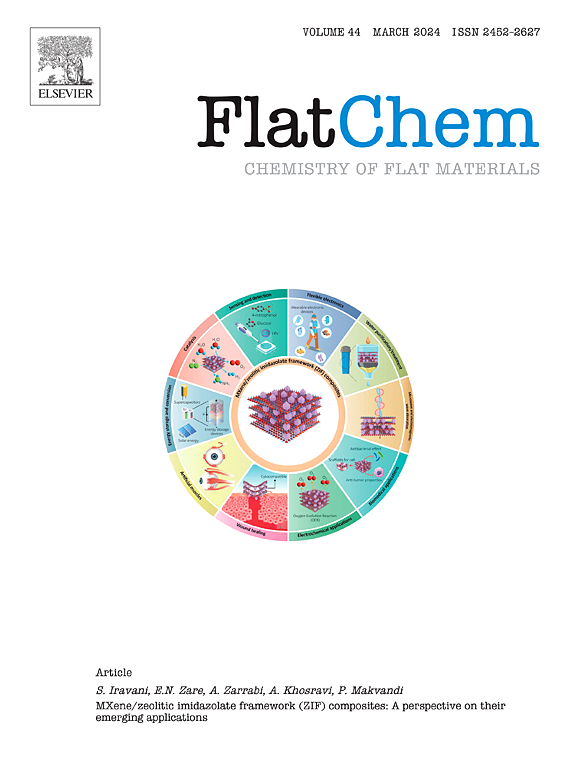锂离子电池中硅/石墨复合材料的改进策略及研究进展
IF 5.9
3区 材料科学
Q2 CHEMISTRY, PHYSICAL
引用次数: 0
摘要
锂离子电池作为一种高性能的储能器件,在电子器件、电动汽车、可再生能源等领域有着广泛的应用。然而,随着市场需求的不断增加,对电池的能量密度、循环稳定性和安全性的要求也越来越严格。在锂离子电池的负极中,硅碳复合材料结合了硅的高容量特性和碳的稳定性和导电性,有效地提高了电池的性能,在锂离子电池中具有很好的应用前景。碳材料是由具有多种同位素的碳元素组成的一类碳材料,广泛应用于电化学和储能领域,如石墨、碳纳米管、石墨烯等。其中,硅/石墨复合材料作为锂离子电池的负极材料,由于具有较高的理论比容量而备受关注。然而,在硅含量低、石墨与硅界面难以兼容、循环性能等方面仍存在很大的挑战。通过多组分设计、界面工程和合金化等策略,研究人员可以有效地提高其性能,以满足未来电池技术的发展需求。综述了锂离子电池中硅/石墨复合材料的改进策略和研究进展,并进一步探讨了硅/石墨复合材料的优化机理和性能增强途径。本文章由计算机程序翻译,如有差异,请以英文原文为准。

Improvement strategies and research progress of silicon/graphite composites in lithium-ion batteries
As a high-performance energy storage device, lithium-ion batteries have a wide range of applications in electronic devices, electric vehicles and renewable energy. However, with the increasing market demand, the requirements for energy density, cycle stability and safety of batteries are becoming increasingly stringent. In the anode of lithium-ion batteries, silicon‑carbon composites have a promising application in lithium-ion batteries because they combine the high-capacity properties of silicon with the stability and conductivity of carbon, effectively enhancing the performance of the battery. Carbon materials are a class of carbon materials composed of carbon elements with a variety of isotopes, which are widely used in electrochemistry and energy storage, such as graphite, carbon nanotubes, graphene and so on. Among them, silicon/graphite composites have attracted much attention as anode materials for lithium-ion batteries due to their high theoretical specific capacity. However, there are still great challenges in terms of low silicon content, difficult compatibility between graphite and silicon interfaces, and cycling performance. Through strategies such as multi-component design, interfacial engineering and alloying, researchers can effectively improve their performance to meet the development needs of future battery technologies. This paper reviews the improvement strategies and research progress of silicon/graphite composites in lithium-ion batteries, and further delves into the optimization mechanisms and performance enhancement pathways of silicon/graphite composites.
求助全文
通过发布文献求助,成功后即可免费获取论文全文。
去求助
来源期刊

FlatChem
Multiple-
CiteScore
8.40
自引率
6.50%
发文量
104
审稿时长
26 days
期刊介绍:
FlatChem - Chemistry of Flat Materials, a new voice in the community, publishes original and significant, cutting-edge research related to the chemistry of graphene and related 2D & layered materials. The overall aim of the journal is to combine the chemistry and applications of these materials, where the submission of communications, full papers, and concepts should contain chemistry in a materials context, which can be both experimental and/or theoretical. In addition to original research articles, FlatChem also offers reviews, minireviews, highlights and perspectives on the future of this research area with the scientific leaders in fields related to Flat Materials. Topics of interest include, but are not limited to, the following: -Design, synthesis, applications and investigation of graphene, graphene related materials and other 2D & layered materials (for example Silicene, Germanene, Phosphorene, MXenes, Boron nitride, Transition metal dichalcogenides) -Characterization of these materials using all forms of spectroscopy and microscopy techniques -Chemical modification or functionalization and dispersion of these materials, as well as interactions with other materials -Exploring the surface chemistry of these materials for applications in: Sensors or detectors in electrochemical/Lab on a Chip devices, Composite materials, Membranes, Environment technology, Catalysis for energy storage and conversion (for example fuel cells, supercapacitors, batteries, hydrogen storage), Biomedical technology (drug delivery, biosensing, bioimaging)
 求助内容:
求助内容: 应助结果提醒方式:
应助结果提醒方式:


